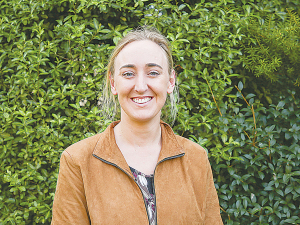NZ scientists make breakthrough in Facial Eczema research
A significant breakthrough in understanding facial eczema (FE) in livestock brings New Zealand closer to reducing the disease’s devastating impact on farmers, animals, and rural communities.
 Diana Selbie says one of the land use options proposed for nitrogen sensitive catchments could be dairy sheep.
Diana Selbie says one of the land use options proposed for nitrogen sensitive catchments could be dairy sheep.
Findings from an AgResearch study shows that dairy sheep appear to have lower nitrogen leaching per hectare than their bovine counterparts.
Dr Diana Selbie has been leading an MBIE-funded project looking at the environmental footprint of dairy sheep to provide hard data to back up claims that this industry is more environmentally friendly. She says the industry is small but fast growing and is in need of evidence to support their green reputation in international markets.
"Not only has no environmental work been done on dairy sheep in NZ but not much work done on sheep at all, in terms of grazing systems. So we were starting with not much at all," she says.
Selbie says one of the land use options proposed for nitrogen sensitive catchments could be dairy sheep. Similarities in farming systems between dairy cows and dairy sheep means existing knowledge can be applied.
The environmental study into the sheep dairy industry was part of a wider project.
"Environmental effects were a small part of a wider programme looking at other topics such as lamb rearing, and human nutritional aspects of sheep milk sucha as digestion. We decided right at the start to focus on the nitrogen questions. So our idea was to provise some baseline information like what kind of nitrogen leaching might we expect under grazing dairy sheep in NZ," she says.
To that end the team decided to focus on two contrasting areas - Taupo in the North Island where the soil is light and the climate is summer dry, and South Otago, where the soils are heavier and the climate wetter. The South Otago trial was different in that it compared 'non lactating sheep' to cows, for twelve months, whereas Taupo provided N leaching data between lactating dairy sheep for two years. Dr Selbie says in an ideal world the trials would have been longer. The project wasn't without its challenges in that it took place over two years when there was a major drought.
The key finding was that N leaching ranged from between ten to fifty percent lower from dairy sheep than what might be expected from dairy cows. The range is due to the variability in soil type, climate, nitrogen use, and the ‘edge effect’.
“Sheep have a smaller bladder and when they urinate it is in smaller amounts and with lower nitrogen concentrations. What that means is that nitrogen is spread around more by the sheep compared to a cow. Also, what we call the ‘edge effect’ means that because there is a smaller urine patch, the pasture roots can access more of that nitrogen in the smaller patch than they can from the bigger patch, which means that they are getting a greater spread effect," she says.
The GHG Side
While there is some comparative data on N leaching, there is virtually nothing at all when it comes to GHG emissions for dairy sheep and Diana Selbie says a lot more work needs to be done in this area. Their findings in this study are preliminary calculations for dairy sheep, compared to more comprehensive past work done on cows.
“Greenhouse gas emissions from the dairy sheep systems were lower generally, on a per hectare basis, than for dairy cows.
“Any benefit was lost however, in fully-housed dairy sheep systems due to greenhouse gases generated through storage of manure and effluent.”
Selbie says the focus up until now has been N leaching; missing out in the research has been greenhouse gases and other contaminants. She would like to see future research broadened to consider ‘life cycle assessment’ or LCA, which looks at the cradle-tograve footprint of a product, taking into account factors within the farm gate like imported feed, and beyond the farm gate including processing, distribution, retail and consumption waste.
Selbie’s colleagues are keen to examine E.coli measurements from dairy sheep and hints that sheep may be higher than dairy cows. She says the critical next step for the dairy sheep industry is to look to have an Overseer module developed for them as currently only workarounds are possible.
OPINION: The latest reforms of local government should come as no surprise.
The avocado industry is facing an extremely challenging season with all parts of the supply chain, especially growers, being warned to prepare for any eventuality.
Rural recycling scheme Agrecovery is welcoming the Government's approval of regulations for a nationwide rural recycling scheme for agrichemicals and farm plastics.
Despite a late and unfavourable start, this year’s strawberry crop is expected to be bountiful for producer and consumer alike.
Nearly three years on from Cyclone Gabrielle, Hawke's Bay apple orchardist Paul Paynter says they are still doing remedial work around their orchards and facing financial challenges.
An unusual participant at the recent Royal A&P Show in Christchurch was a stand promoting a variety of European products, during an event that normally champions the homegrown.
OPINION: Dipping global dairy prices have already resulted in Irish farmers facing a price cut from processors.
OPINION: Are the heydays of soaring global demand for butter over?